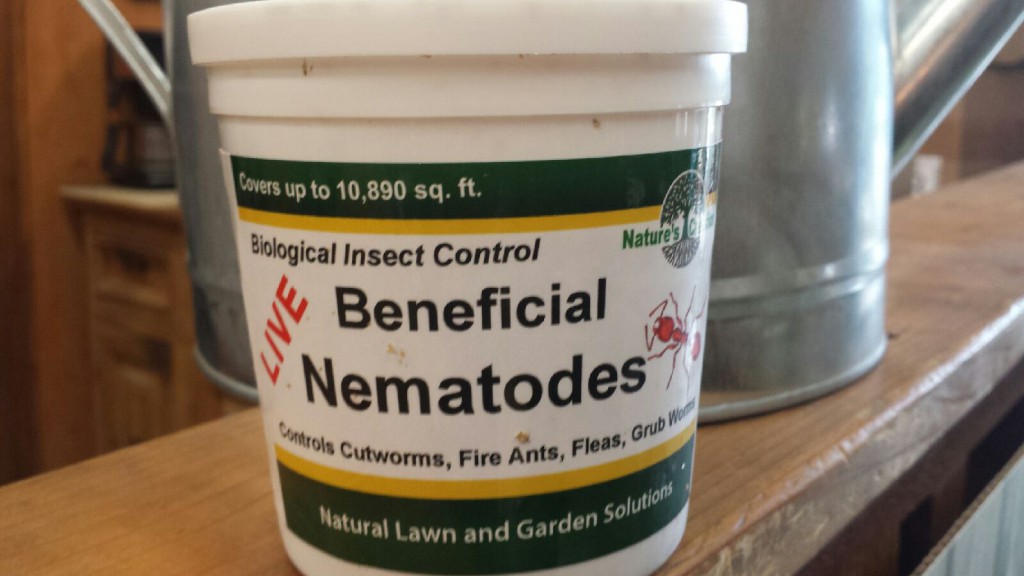 Beneficial nematodes are rapidly gaining in popularity as a proven method of eradication of insect pests.
Beneficial nematodes are rapidly gaining in popularity as a proven method of eradication of insect pests.
What are Beneficial Nematodes?
Members of the Steinernematidae and Heterorhabditidae families, beneficial nematodes for gardening purposes are colorless roundworms which are non-segmented, elongated in shape and usually microscopic and commonly found living within the soil.
These roundworms can be used to control soil borne insect pests but are useless for control of pests found in the leaf canopy. Beneficial nematodes for gardening insect control may be used to squash pests such as:
- Caterpillars
- Cutworms
- Crown borers
- Grubs
- Corn rootworms
- Crane flies
- Thrips
- Fungus gnats
- Beetles
There are also bad nematodes and the difference between good nematodes and bad ones is simply upon which host they attack; bad nematodes, also called non-beneficial, root-knot or “plant parasitic” nematodes, cause damage to crops or other plants.
How do Beneficial Nematodes Work?
Using these roundworms as pest control will attack soil borne insect pests with no harmful effects on earthworms, plants, animals or humans, making it an environmentally friendly solution. They are morphologically, ecologically and genetically more diverse than any other animal group with the exception of arthropods.
With over 30 species of entomopahogenic nematodes, each with a unique host, finding a suitable nematode to aid in pest control is not only a “green” solution of integrated pest management but a simple one as well.
They have a lifecycle consisting of egg, four larval stages and an adult stage. It is during the third larval stage that the nematodes seek a host, usually insect larvae, and enter it through the host mouth, anus or spiracles. The nematode carries bacteria called Xenorhabdus, which is subsequently introduced into the host whereupon death of the host occurs within 24 to 48 hours.
The Steinernematids develop into adults and then mate within the host’s body, while the Heterorhabditids produce hermaphroditic females. Both nematode species ingest the host’s tissue until they mature to the third juvenile phase and then they leave the remains of the host body.
Nematodes as Pest Control
Using beneficial nematodes for gardening pest control has become an increasingly popular method for six reasons:
- As previously mentioned, they have an incredibly wide range of hosts and can, therefore, be utilized to control numerous insect pests.
- Entomopathogenic nematodes kill the host quickly, within 48 hours.
- Nematodes may be grown on artificial media, making a readily available and inexpensive product.
- When nematodes are stored at proper temperatures (60-80 degrees F.), they will remain viable for three months and if refrigerated at 37-50 F. (16-27 C.), may last six months.
- They are tolerant of most insecticides, herbicides and fertilizers, and the juveniles can survive for a time without any nourishment while searching for an appropriate host. In a nutshell, they are resilient and durable.
- There is no insect immunity to the Xenorhabdus bacteria, although beneficial insects often escape being parasitized because they are more active and apt to move away from the nematode. The nematodes cannot develop in vertebrates, which make them extremely safe and environmentally friendly.
How to Apply Entomopathogenic Nematodes
Beneficial nematodes for gardening can be found in sprays or soil drenches. It is crucial to apply them at the perfect environmental conditions needed for their survival: warm and moist.
Irrigate the application site both before and after introducing the nematodes and only use them when soil temperatures are between 55-90 F. (13-32 C.) in filtered sun.
Use the nematode product within the year and do not store in areas of high heat. Remember, these are living creatures.
Click here for more information.
Come by Lochte Feed and General Store to protect your lawn with Beneficial Nematodes.
Source: by Amy Grant, at GardeningKnowHow.com
